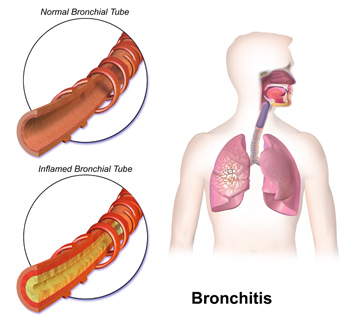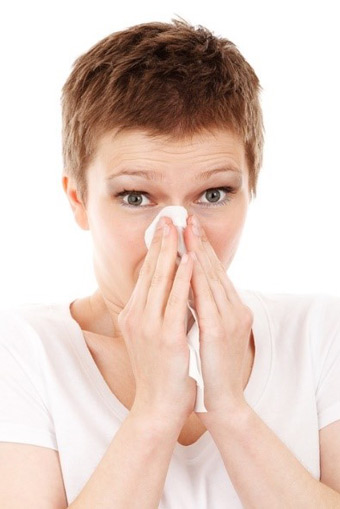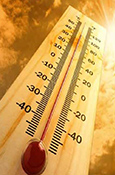Bronchitis and care
Bronchitis and care
Being a teacher is more than just handling the students and helping them learn. The role of a teacher also involves certain occupational hazards like stress, spinal/muscular issues and even common cold!
One such hazard which begins as a symptom of common cold is bronchitis.
Bronchitis is an infection of the lungs, which causes them to become irritated and inflamed. The main symptom is cough, sore throat and wheezing.
Though bronchitis is common and affects both, teachers and students, it has been widely observed in teachers due to their exposure to dust.
 Types of Bronchitis:
Types of Bronchitis:Bronchitis can be of two types:
-
Acute Bronchitis
This is also known as chest cold. This results in a cough that lasts for nearly three weeks.
-
Chronic Bronchitis
This is defined as a productive cough that lasts anywhere between three months to two years.
What causes it?
Bronchitis can be caused due to various reasons, like:
-
Virus/Bacteria
Bronchitis is usually caused due to the presence of virus or bacteria in the air/water that one consumes.
-
Poor Immunity
When the immunity level is low, the person tends to fall ill frequently and is susceptible to bronchitis.
-
Pollution
Pollution leaves dust particles suspended in the air. Inhaling this leads to bronchitis and other respiratory issues.
-
Chemical fumes/Dust
Inhaling chemical fumes or dust can also result in bronchitis.
-
Gastric reflux
Gastric reflux or heartburn often results in bronchitis when the fluid from the stomach goes into the oesophagus. Repeated bouts of heartburn can irritate the throat, causing it to become inflamed.
-
Contact with others
Common cold can also trigger bronchitis if the immunity is low. When a teacher comes in contact with a student having a contagious flu/cold, it automatically affects the teacher, leading to cold and bronchitis as well.
Symptoms:
 Some of the symptoms of bronchitis are:
Some of the symptoms of bronchitis are:-
Sore throat
This is a painful, dry and itchy feeling in the throat. Sore throat is often the result of bacterial/viral infection.
-
Headache
Headache is a sign of stress or emotional distress. It can be caused due to various reasons like medical condition, anxiety, cold and fever.
-
Runny/blocked nose
The most common symptom of bronchitis is a runny nose. This makes it difficult for a person to breathe.
-
Aches and pains
Bronchitis results in a body pain, throat pain and even rib ache.
-
Tiredness
A person with bronchitis often tends to feel tired and exhausted.
-
Chest congestion
Bronchitis results in the accumulation of mucus and fluids in the lungs. This makes it difficult for a person to breathe and often leads to cough or wheezing.
-
Shortness of breath
Due to the build-up of fluid in the lungs, one often finds it difficult to breathe. This results in a person taking in lesser oxygen than what is required.
-
Mild fever
A person with bronchitis might observe mild fluctuations in the body temperature, resulting in fever.
Diagnosis:
-
Physical examination
The general physician conducts a physical examination to determine the health of a person.
-
Sputum culture
This test analyses the mucus and other fluids from the lungs to determine the condition.
-
Spirometry test
Spirometry test is done to understand how the lung functions. It measures the air inhaled, the air exhaled and the time duration between inhaling and exhaling.
-
Chest CT scan
A chest scan is done to understand the level of chest congestion, to decide on the medication to be prescribed.
Treatment:
-
 Get plenty of rest
Get plenty of rest
It is advised to take rest and not strain yourself. Getting plenty of rest during bronchitis will help a person recover faster.
-
Drink lots of fluids
Avoid caffeinated drinks and alcohol but keep yourself hydrated with warm water, soup and tea.
-
Treat headaches and fever
Seek a doctor’s opinion and consume medicines for headache and fever.
-
Use a protective mask to reduce inhaling smoke and fumes
Wear a mask to cover your nose while breathing. This will help to avoid inhaling dust and fumes.
-
Inhale steam
Steam inhalation is a great way to treat bronchitis. Steam is believed to loosen the mucus in the lungs, thereby reducing chest congestion.
-
Home Remedies
Certain home remedies like consuming ginger infused tea/water; drinking warm water with lemon and honey; consuming pepper corns and gargling twice a day with salt water is said to help reduce the effects of bronchitis.
Though the home remedies may provide temporary relief, it is advised to visit the doctor at the onset of the infection and get the necessary tests done to treat bronchitis.





















